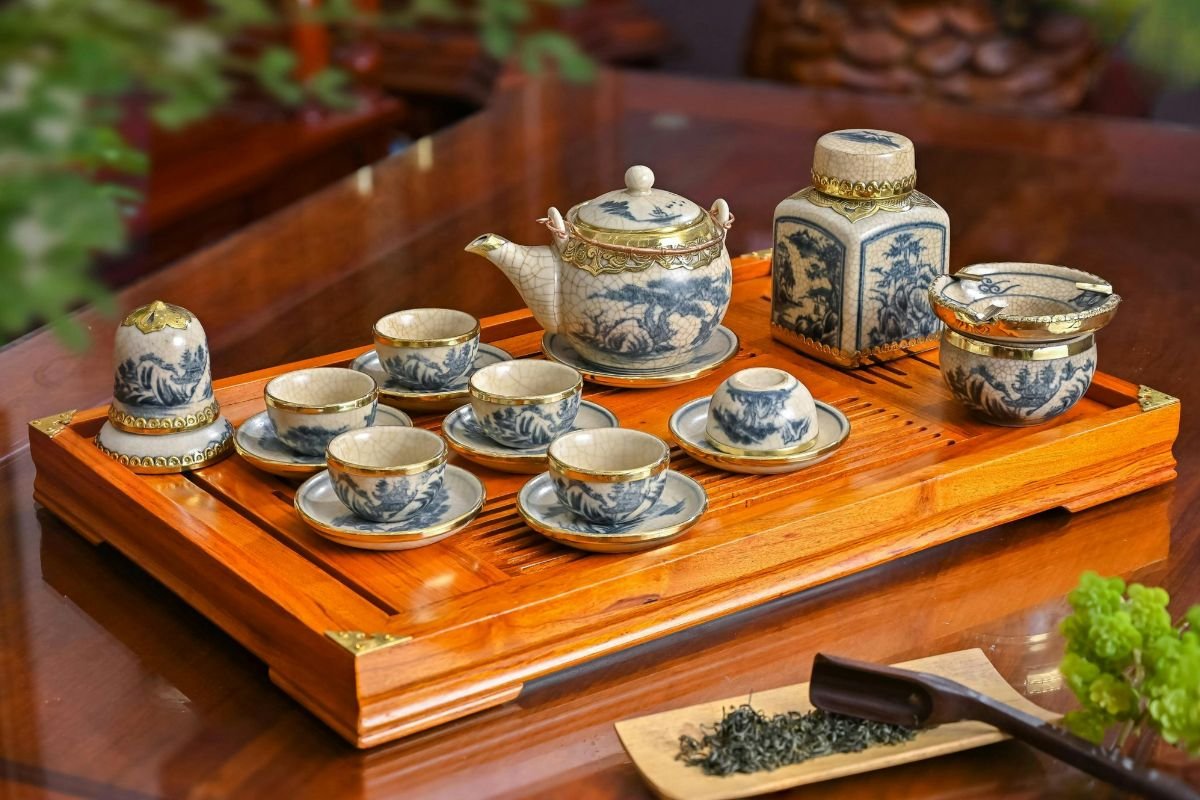
Broken Orange Pekoe
Tea lovers know there are countless types and grades of tea to enjoy, each with its own unique character.

Tea is thought to have originated in China around 2737 BCE, with a story involving the legendary Emperor Shen Nong. The tale goes that one day, as the emperor was boiling water beneath a tea tree, a few leaves drifted into his pot. Intrigued by the flavor, he discovered tea—a drink that has since spread across the world.
Historically, tea was revered for its medicinal properties. Chinese scholars and poets praised it as a source of inspiration, while Buddhist monks found it helpful for staying alert during meditation. By the Tang Dynasty (618-907 CE), tea had become an integral part of Chinese culture, with dedicated tea ceremonies and even a “Tea Bible,” the Chajing, written by Lu Yu to document the art of tea preparation.
When tea reached Japan in the 9th century, it quickly gained popularity among monks and aristocrats. The Japanese elevated tea to an art form, embodying harmony, respect, purity, and tranquility in the tea ceremony, or chanoyu. This ritualistic preparation of matcha (powdered green tea) is carefully choreographed, with each movement conveying grace and mindfulness.
A traditional Japanese tea room is a serene space, often adorned with minimalist decor and natural elements. The process of serving tea here is a spiritual experience, not merely a way to quench thirst. The tea ceremony embodies wabi-sabi, the beauty of imperfection, and serves as a reminder of living in the present moment.
When tea made its way to England in the 17th century, it was initially a luxury item, enjoyed mostly by the elite. But as trade grew, so did tea’s accessibility. By the Victorian era, tea had become a staple of British life, giving rise to the tradition of afternoon tea.
The custom was popularized by Anna, the Duchess of Bedford, who sought a small meal to bridge the long gap between lunch and dinner. The tradition of afternoon tea features fine china, elegant tea pots, and delicate finger sandwiches, scones, and pastries. Today, it remains a cherished British ritual, blending refined style with a warm invitation to relax and socialize.
India is one of the largest tea producers in the world, and its love affair with chai is vibrant and flavorful. Unlike the subtlety of a Japanese tea ceremony or the refinement of British afternoon tea, Indian chai culture is bold, lively, and accessible. Chai stands, or chaiwalas, can be found on almost every street corner, serving steaming cups of spiced milk tea to people from all walks of life.
Masala chai, with its blend of black tea, milk, sugar, and spices like ginger, cardamom, cinnamon, and cloves, is as much a ritual as it is a daily comfort. It’s often served in small glasses or clay cups, which can be disposed of after use. Indian chai culture reflects the warmth and hospitality of the country, where sharing a cup of chai often opens doors to friendly conversation and companionship.
In Morocco, tea is a symbol of hospitality and generosity. Moroccan mint tea, or atay, is a refreshing mix of green tea, fresh mint leaves, and plenty of sugar, prepared in a beautiful silver teapot. The preparation itself is a show of craftsmanship, with tea poured from a height to create a frothy “crown” atop each glass.
Serving tea in Morocco is a ceremonial act, often performed by the head of the household or an elder. Guests are typically offered three servings, each with its own symbolic meaning. The tea ceremony showcases Moroccan warmth, emphasizing the importance of connecting with others and savoring the moment.
One of the most delightful aspects of tea culture is the sheer variety of flavors. From delicate white tea to robust black tea, and from smoky lapsang souchong to floral jasmine, there’s a tea for every palate. Regional preferences reflect not only taste but also climate and culture. For example, green tea is favored in China and Japan for its refreshing qualities, while black tea is preferred in Britain and India, where its boldness is balanced with milk and sugar.
In recent years, a new wave of tea culture has emerged as people explore different blends and health benefits. Herbal teas, like chamomile, peppermint, and rooibos, are caffeine-free and offer unique flavors and benefits. The popularity of matcha, bubble tea, and kombucha reflects tea’s adaptability to modern tastes, proving that this ancient beverage can still surprise and delight.
From quiet contemplation to joyful celebration, tea has a remarkable ability to adapt to different times and cultures. It’s more than a drink—it’s a tradition that binds people through shared rituals and respect for the process.
In today’s fast-paced world, embracing tea culture offers a refreshing reminder to slow down, connect, and find comfort in simple pleasures. So, the next time you enjoy a cup of tea, consider the journey it took to reach your hands and the cultures it represents. In every sip, you’re tasting centuries of history, love, and tradition. Cheers to that!

Tea lovers know there are countless types and grades of tea to enjoy, each with its own unique character.

The word “chai” simply means “tea” in Hindi. What many of us call “chai tea” is actually

Matcha tea has become a global sensation, celebrated for its vibrant green color, unique flavor,

Tea has been enjoyed for centuries, not only for its flavor but also for its potential health benefits.

Green tea is a popular beverage known for its refreshing taste, numerous health benefits, and

Black tea is a staple for tea lovers worldwide, prized for its rich, full-bodied flavor and

© 2025 YUGA NATURALS. All Rights Reserved